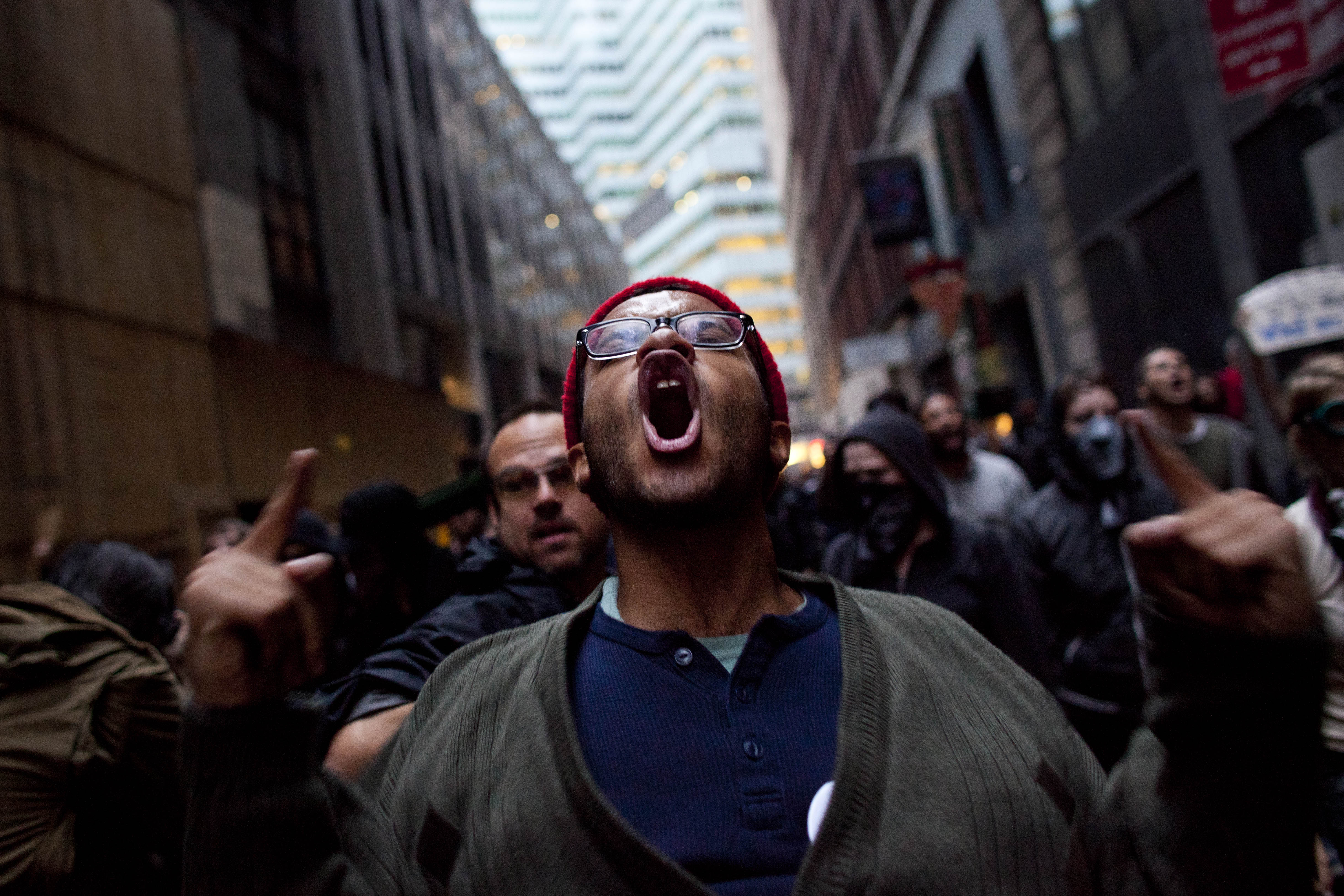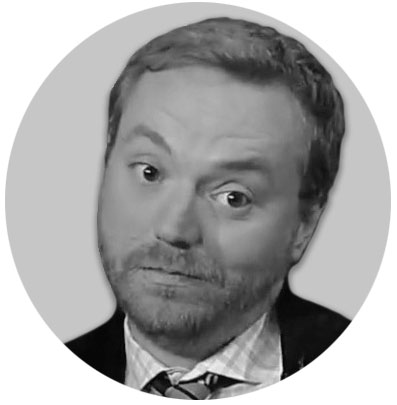Occupy, 6 years later
Occupy Wall Street failed. But the echoes of the movement continue to affect our politics and nation today.


On Sept. 17, 2011 — at the behest of an Adbusters email blast and subsequent social media bat signal — a ragtag coalition of unemployed recent college graduates, anarchists, communists, artists, and even Ron Paul-adoring gold bug libertarians began building micro-villages in a privately owned park in Manhattan's Financial District. Though technically a few blocks north of Wall Street, they were branded Occupy Wall Street.
The original Adbusters email called for the following activation of civil disobedience: "On September 17, we want to see 20,000 people flood into lower Manhattan, set up tents, kitchens, peaceful barricades and occupy Wall Street for a few months. Once there, we shall incessantly repeat one simple demand in a plurality of voices."
Inspired by the Arab Spring — itself a movement with a complicated and mostly failed legacy — the "one simple demand" was "DEMOCRACY NOT CORPORATOCRACY."
The Week
Escape your echo chamber. Get the facts behind the news, plus analysis from multiple perspectives.

Sign up for The Week's Free Newsletters
From our morning news briefing to a weekly Good News Newsletter, get the best of The Week delivered directly to your inbox.
From our morning news briefing to a weekly Good News Newsletter, get the best of The Week delivered directly to your inbox.
Within days, Occupy Wall Street was fully entrenched in Zuccotti Park, with a publicly posted daily schedule that included communal meals, marches, and various activities for each of the dozens of volunteer working groups — such as medical, legal, sanitation, arts, treasury, media, internet, et al.
Less than a month later, Occupy camps had popped up in every major American city and nearly every major city in the world.
Everyone had an opinion about them, even President Obama, who declared he was "on their side." For a brief moment, Occupy Wall Street channeled both the rage and energy of left-of-center populism on a global scale.
And just like that, it all fell apart.
A free daily email with the biggest news stories of the day – and the best features from TheWeek.com
Why did Occupy fail? Perhaps because no one could convincingly articulate what the Occupy movement really stood for.
Though it had promised "one simple demand" in response to the government's bailout of the multinational banks who bore great responsibility for the 2008 financial meltdown, representatives of leaderless Occupy had in fact issued many demands. Among the more familiar included the repeal of the Citizens United Supreme Court decision on campaign finance, college tuition debt relief, and reinstating the Glass-Steagall banking reform act. There were also demands for free child and elder care, universal employment, and open borders. Eventually, Occupy was demanding the removal of the bronze bull statue on Wall Street (this was years before a hedge fund would install "Fearless Girl" as a pro-Wall Street marketing gimmick disguised as feminist guerilla art).
More effective at imagery than substantive political activism, Occupy began to be associated more with its ritual-heavy procedures for conducting meetings and reaching "consensus" through a democratic process so cumbersome that consensus was almost never achieved. Perhaps the most iconic of all Occupy imagery is the spectacle of the "human microphone" — where after calling for a "mic check," a speaker's statement would be repeated line by line by the nearest Occupiers. This tactic was used to quiet crowds and project important announcements without the use of electronic amplification — which had been banned by authorities. Mic checks were also used to drown out unwanted speakers by creating an indecipherable cacophony.
Though much of the Occupy movement prided itself on disciplined, peaceful protest, a community united by semi-legal outdoor urban squatting was bound to attract some parasitic elements. There were reports of rapes and overdose deaths, as well as occasional black bloc violence, particularly in Occupy Oakland. There was also the Occupy guy who defecated on a police car, an image that went uber-viral and didn't win many hearts and minds.
Two months after the populist message of "We Are the 99 Percent" debuted to a mostly positive reception — nearly 60 percent of Americans were in favor of Occupy — polls showed that the public's view of Occupy had crashed to about 30 percent.
In November 2011, then-New York City Mayor Michael Bloomberg, who had professed tepid tolerance for the protests for months, decided that occupied Zuccotti Park's “health and safety conditions [had become] intolerable" and that although the protesters had First Amendment rights, they were "making [the park] unavailable to anyone else."
Bloomberg ordered an NYPD raid of the park in the dead of night, tearing the encampment out piece by piece and evicting demonstrators. The end of Occupy Wall Street effectively drove a stake through the spiritual heart of the larger movement, which had placed far too much value in the gesture of physically occupying at the expense of forming a coherent political movement.
Soon after, most of the Occupy camps were busted up by local authorities, who then followed New York's lead by instituting "no laying down" rules in formerly occupied spaces.
A year later, Obama was re-elected, as was much of Congress, and Occupy's rebel spirit was a distant and fading memory. But the "burn this mother down" anger that briefly drew such disparate groups together in performative protest hadn't died. It had spread.
Beginning in the summer of 2014 following the Ferguson, Missouri, police shooting of Michael Brown, the leaderless Black Lives Matter movement took a page out of the Occupy handbook with its deployment of tactics such as blocking traffic, occupying public spaces, and shouting down speakers with whom they disagreed. Armor-clad police abuse against both movements contributed to public awareness of the "rise of the warrior cop," as Radley Balko named his book on police militarization.
And much to its credit, Black Lives Matter improved on Occupy's ineffective model of making innumerable demands but producing nothing of tangible use for the greater public when BLM created Check the Police — a publicly available database of police union contracts for the largest cities in the United States, compiled through Freedom of Information Act (FOIA) requests.
The economic populists of Occupy may have felt let down by Barack Obama, and they certainly had no love for the Wall Street-friendly "neoliberal" Hillary Clinton, but in the democratic socialist senator from Vermont promising free college and vague assurances to make "the billionaires" pay for it, Occupy veterans did find the savior they had been waiting for.
Though Bernie Sanders was bested for the 2016 Democratic presidential nomination, his insurgent candidacy is largely responsible for the spike in membership of Democratic Socialists of America (DSA), an activist organization that wants to abolish private property and, according to its website, rejects the idea that democratic socialists want to "create an all-powerful government bureaucracy," but instead prefers "worker-owned cooperatives or public-owned enterprises managed by workers and consumer representatives." Such plainly contradictory altruism would be more than welcome in any Occupy manifesto.
While it may seem heretical to consider the notion, even the ascendance of Donald Trump finds some of its roots in the Occupy movement. Both in its rejection of "the elites" and its manifestation of working-class resentment of the financial industry's undo influence on government, the Trump train was the xenophobic right-wing offshoot of Occupy populist rage. And just as is happening in the present day, in 2011 antifa was throwing rocks and punches, often in the name of grievances wholly unrelated to fascism.
Occupy's brief moment in the political spotlight may be best remembered as a confused curiosity. It may also be remembered as the spark of the socialist uprising within the larger Democratic Party, or a primer for the waves of confrontational street protest which have continued in various iterations throughout the decade.
Given the many surrealistic aspects of the Trump presidency, the fleeting Occupy moment of 2011 is indeed an era apart. Still, for its elevation of populist anger to the forefront of the national conversation, Occupy still echoes throughout our politics and nation today.
Anthony L. Fisher is a journalist and filmmaker in New York with work also appearing at Vox, The Daily Beast, Reason, New York Daily News, Huffington Post, Newsweek, CNN, Fox News Channel, Sundance Channel, and Comedy Central. He also wrote and directed the feature film Sidewalk Traffic, available on major VOD platforms.



